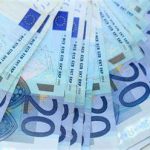The Rise of Fake Products: A Comprehensive Overview
In today's worldwide marketplace, counterfeit products have become amazingly prevalent. From luxury fashion products to electronic gizmos, the fake product market has actually become a multibillion-dollar endeavor that affects customers, businesses, and economies worldwide. This short article will explore the phenomenon of purchasing fakes, checking out the attraction behind counterfeit products, their ramifications, and assistance for customers looking for to browse this complex landscape.
Comprehending the Allure of Fake Products
1. Cost-Effectiveness
Among the primary reasons consumers select fake items is the considerable expense savings. Authentic luxury items can bring significant cost tags, making them financially out of reach for lots of. Counterfeit variations typically sell for a fraction of the expense, providing an attractive alternative for those who desire the visual of high-end brands without the accompanying cost.
2. Pattern Accessibility
Fashion trends often move rapidly, prompting customers to invest in present styles. Nevertheless, acquiring authentic designer products for each new season can be financially unfeasible. Fake products permit individuals to remain on trend without breaking the bank, making them especially interesting more youthful consumers and those with limited spending plans.
3. Social Status
In many cultures, the ownership of luxury brand names is related to social status and prestige. Counterfeit items can supply a semblance of this status, enabling people to predict an image of wealth and success without the accompanying monetary concern of genuine products.
The Implications of Buying Fakes
1. Economic Impact
While counterfeit items may provide a short-term monetary advantage to consumers, the more comprehensive economic ramifications are substantial. The counterfeit industry undermines genuine organizations, resulting in lost sales and damage to brand name reputation. According to reports from the International Chamber of Commerce, the total economic value lost due to counterfeiting and piracy could reach over $4.2 trillion by 2022, impacting task markets and state incomes worldwide.
2. Security and Quality Concerns
Counterfeit goods often do not have the quality and safety assurance of authentic items. Items like electronics, cosmetics, and pharmaceuticals might position health threats, as they do not go through basic security screening or quality assurance measures. For circumstances, counterfeit cosmetics can consist of damaging chemicals, while fake electronics may position fire risks due to inferior materials.
3. Ethical Considerations
The trading of fake items raise ethical concerns surrounding labor practices and environmental impacts. Counterfeit items are frequently produced in environments that exploit employees, offering low incomes and bad working conditions. Furthermore, the production of these items normally includes very little regard for ecological sustainability.
How to Spot Fake Products
For customers careful of purchasing counterfeit products, discovering to identify fakes is essential. Here are several suggestions to help avoid falling prey to counterfeiters:
1. Research study the Retailer
Confirm authenticity: Seek merchants with established track records and favorable consumer reviews.
Inspect for official collaborations: Authentic brands generally have designated sellers or authorized dealerships.
2. Analyze Prices
Too great to be real: If an offer seems excessively inexpensive compared to standard market prices, continue with care; it's likely a fake.
Rate consistency: Compare prices throughout multiple sites to gauge what a reasonable market price should be.
3. Inspect Product Details
Quality and workmanship: Genuine items normally have premium surfaces, stitching, and products. Check logos and labels for accuracy.
Packaging: Authentic items often can be found in top quality packaging with security functions (e.g., holograms).
4. Look For Legal Channels
Certifying details: Reliable items often feature evidence of credibility, such as identification numbers or authenticity cards.
Return policies: Check for reasonable return policies, as trustworthy sellers need to supply the option to return unwanted or malfunctioning goods.
Alternatives to Buying Fakes
For consumers who desire economical choices without running the risk of the risks of counterfeit goods, think about looking for alternatives:
1. Second-Hand and Vintage Items

Buying pre-owned high-end goods can supply access to authentic products at lower costs. Thrift stores, online markets, and consignment stores frequently provide designer items without the premium cost.
2. Affordable Brands
Numerous brands concentrate on creating top quality items that imitate high-end designs without the associated costs. Researching these brands can yield stylish alternatives without jeopardizing ethics.
3. Do falschgeld kaufen legal
For the creatively likely, crafting or customizing products can in some cases provide both a satisfying experience and a special product that prevents the counterfeit dilemma.
FAQs About Buying Fakes
Q1: Are there legal effects for purchasing counterfeit goods?
Buying counterfeit items may result in legal implications depending on local laws. While consumers may not face severe charges, intentionally acquiring fakes could result in seizure of products and fines.
Q2: How can I report counterfeit products?
Many countries have mechanisms to report counterfeit sellers. Consumers can report suspicious online listings or vendors to local police or organizations focusing on copyright protection.
Q3: What should I do if I unconsciously bought a fake item?
If you discover that your purchase is counterfeit, consider contacting the seller for a return or refund. You can likewise report the seller to the platform utilized for the purchase.
Q4: Can counterfeit items ever be of good quality?
While some counterfeit products may appear well-crafted, they frequently lack the quality control of legitimate brands and can position security dangers. It is recommended to prioritize purchasing genuine items for much better sturdiness and safety.
Q5: Why do some individuals still buy fakes regardless of the risks?
Despite the risks and ethical factors to consider, numerous people continue to buy counterfeit items due to their affordability and desire to take part in the high-end experience without significant financial dedication.
Conclusion
The intricacy surrounding the intake of counterfeit products is diverse, including economic, ethical, and safety aspects. As the counterfeit market continues to flourish, it is vital for customers to stay educated and alert. By recognizing the implications of purchasing fakes and exploring ethical options, individuals can make educated choices that contribute positively to the larger economy and society.
